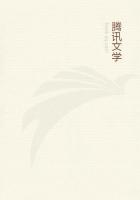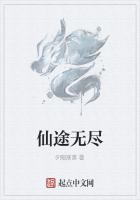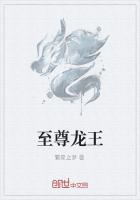At Rosario there is but little tosca-rock: near this place I first noticed at the edge of the river traces of an underlying formation, which, twenty-five miles higher up in the estancia of Gorodona, consists of a pale yellowish clay, abounding with concretionary cylinders of a ferruginous sandstone.This bed, which is probably the equivalent of the older tertiary marine strata, immediately to be described in Entre Rios, only just rises above the level of the Parana when low.The rest of the cliff at Gorodona, is formed of red Pampean mud, with, in the lower part, many concretions of tosca, some stalacti-formed, and with only a few in the upper part: at the height of six feet above the river, two gigantic skeletons of the Mastodon Andium were here embedded; their bones were scattered a few feet apart, but many of them still held their proper relative positions: they were much decayed and as soft as cheese, so that even one of the great molar teeth fell into pieces in my hand.We here see that the Pampean deposit contains mammiferous remains close to its base.On the banks of the Carcarana, a few miles distant, the lowest bed visible was pale Pampean mud, with masses of tosca-rock, in one of which I found a much decayed tooth of the Mastodon:
above this bed, there was a thin layer almost composed of small concretions of white tosca, out of which I extracted a well preserved, but slightly broken tooth of Toxodon Platensis: above this there was an unusual bed of very soft impure sandstone.In this neighbourhood I noticed many single embedded bones, and I heard of others having been found in so perfect a state that they were long used as gate-posts: the Jesuit Falkner found here the dermal armour of some gigantic Edental quadruped.
In some of the red mud scraped from a tooth of one of the Mastodons at Gorodona, Professor Ehrenberg finds seven Polygastrica and thirteen Phytolitharia, all of them, I believe, with two exceptions, already known species.("Monatsberichten der konig.Akad.zu Berlin" April 1845.The list consists of:--POLYGASTRICA.
Campylodiscus clypeus.
Coscinodiscus subtilis.
Coscinodiscus al.sp.
Eunotia.
Gallionella granulata.
Himantidium gracile.
Pinnularia borealis.)
Of these twenty, the preponderating number are of fresh-water origin; only two species of Coscinodiscus and a Spongolithis show the direct influence of the sea; therefore Professor Ehrenberg arrives at the important conclusion that the deposit must have been of brackish-water origin.Of the thirteen Phytolitharia, nine are met with in the two deposits in Bahia Blanca, where there is evidence from two other species of Polygastrica that the beds were accumulated in brackish water.The traces of coral, sponges, and Polythalamia, found by Dr.Carpenter in the tosca-rock (of which I must observe the greater number of specimens were from the upper beds in the southern parts of the formation), apparently show a more purely marine origin.
At ST.FE BAJADA, in Entre Rios, the cliffs, estimated at between sixty and seventy feet in height, expose an interesting section: the lower half consists of tertiary strata with marine shells, and the upper half of the Pampean formation.The lowest bed is an obliquely laminated, blackish, indurated mud, with distinct traces of vegetable remains.(M.d'Orbigny "Voyage" Part.Geolog.page 37, has given a detailed description of this section, but as he does not mention this lowest bed, it may have been concealed when he was there by the river.There is a considerable discrepancy between his description and mine, which I can only account for by the beds themselves varying considerably in short distances.) Above this there is a thick bed of yellowish sandy clay, with much crystallised gypsum and many shells of Ostreae, Pectens, and Arcae: above this there generally comes an arenaceous crystalline limestone, but there is sometimes interposed a bed, about twelve feet thick, of dark green, soapy clay, weathering into small angular fragments.The limestone, where purest, is white, highly crystalline, and full of cavities: it includes small pebbles of quartz, broken shells, teeth of sharks, and sometimes, as I was informed, large bones: it often contains so much sand as to pass into a calcareous sandstone, and in such parts the great Ostrea Patagonica chiefly abounds.(Captain Sulivan, R.N., has given me a specimen of this shell, which he found in the cliffs at Point Cerrito, between twenty and thirty miles above the Bajada.) In the upper part, the limestone alternates with layers of fine white sand.The shells included in these beds have been named for me by M.d'Orbigny: they consist of:--1.Ostrea Patagonica, d'Orbigny, "Voyage" Part.Pal.
2.Ostrea Alvarezii, d'Orbigny, "Voyage" Part.Pal.
3.Pecten Paranensis, d'Orbigny, "Voyage" Part.Pal.
4.Pecten Darwinianus, d'Orbigny, "Voyage" Part.Pal.
5.Venus Munsterii, d'Orbigny, "Voyage" Pal.
6.Arca Bonplandiana, d'Orbigny, "Voyage" Pal.
7.Cardium Platense, d'Orbigny, "Voyage" Pal.
8.Tellina, probably nov.species, but too imperfect for description.
PHYTOLITHARIA.
Lithasteriscus tuberculatus.
Lithodontium bursa.
Lithodontium furcatum.
Lithodontium rostratum.
Lithostylidium Amphiodon.
Lithostylidium Clepsammidium.
Lithostylidium Hamus.
Lithostylidium polyedrum.
Lithostylidium quadratum.
Lithostylidium rude.
Lithostylidium Serra.
Lithostylidium unidentatum.
Spongolithis Fustis.

